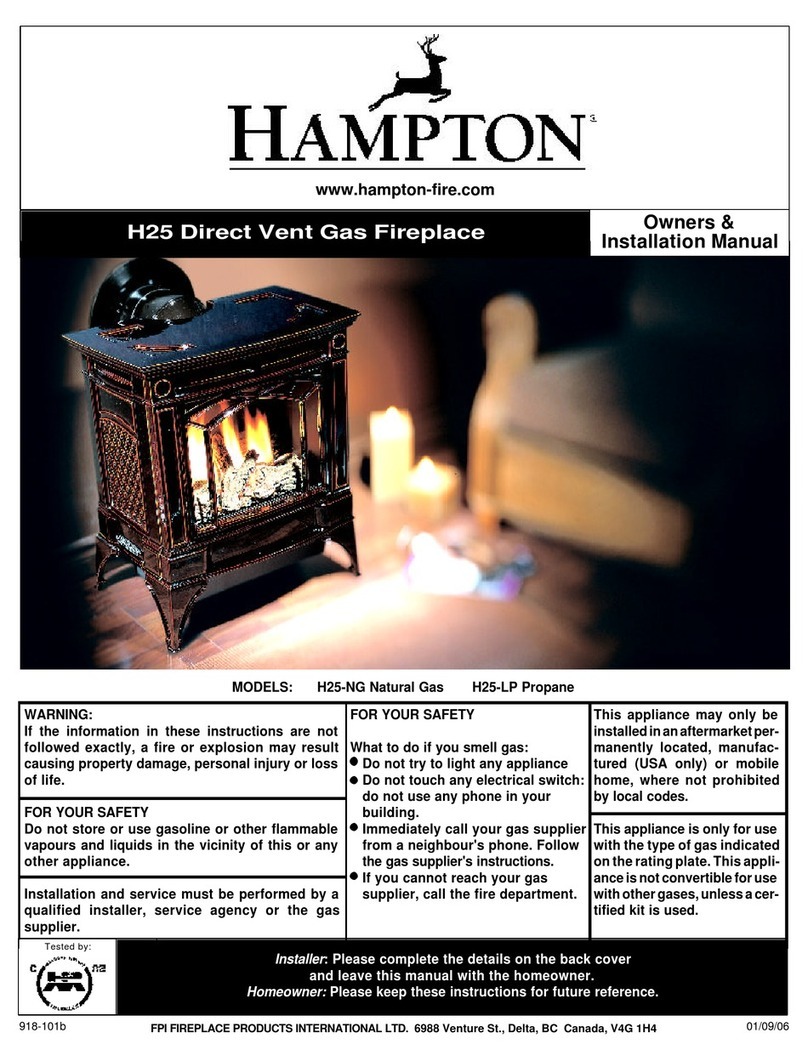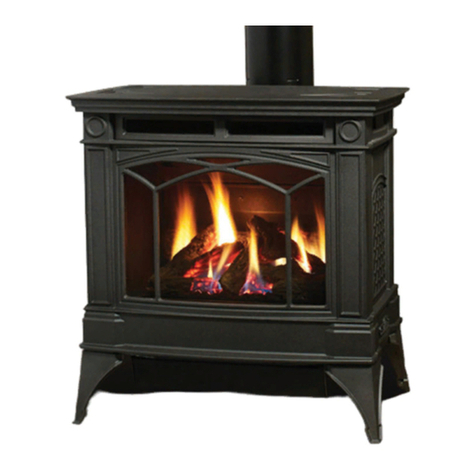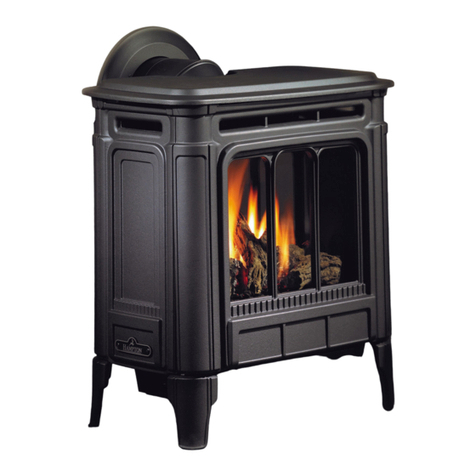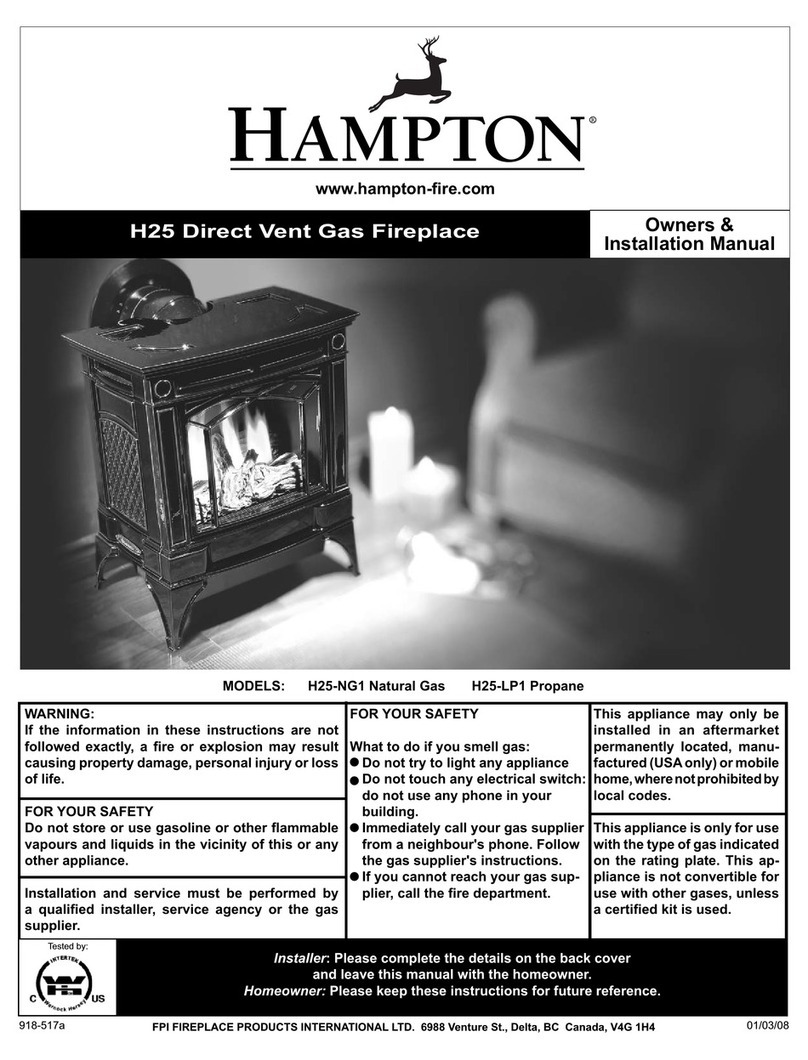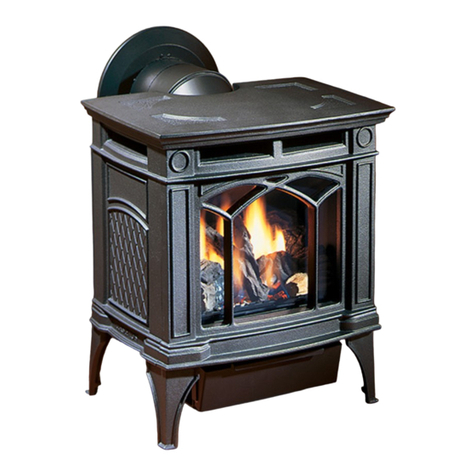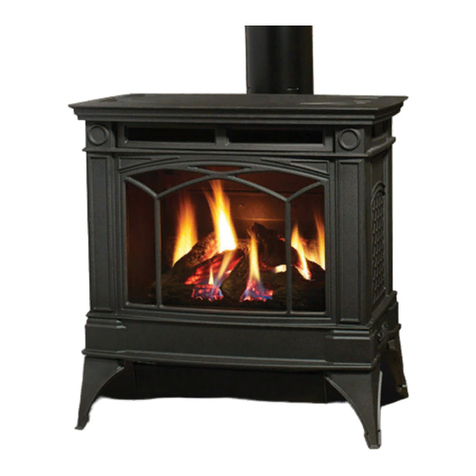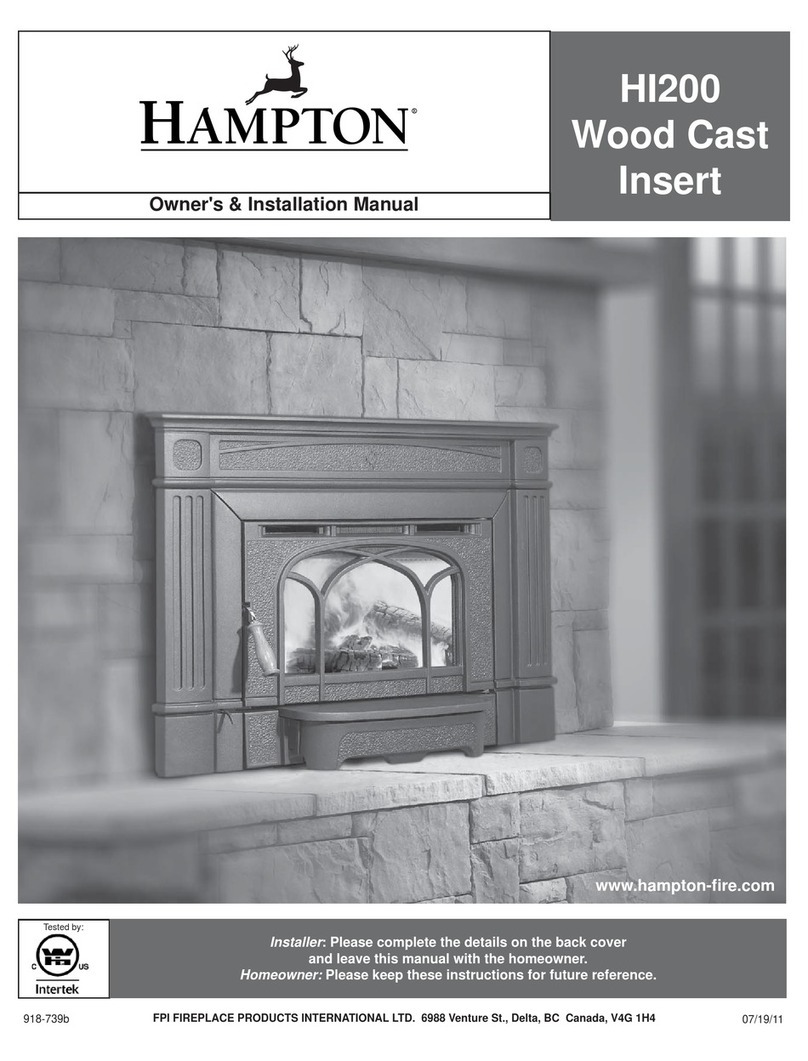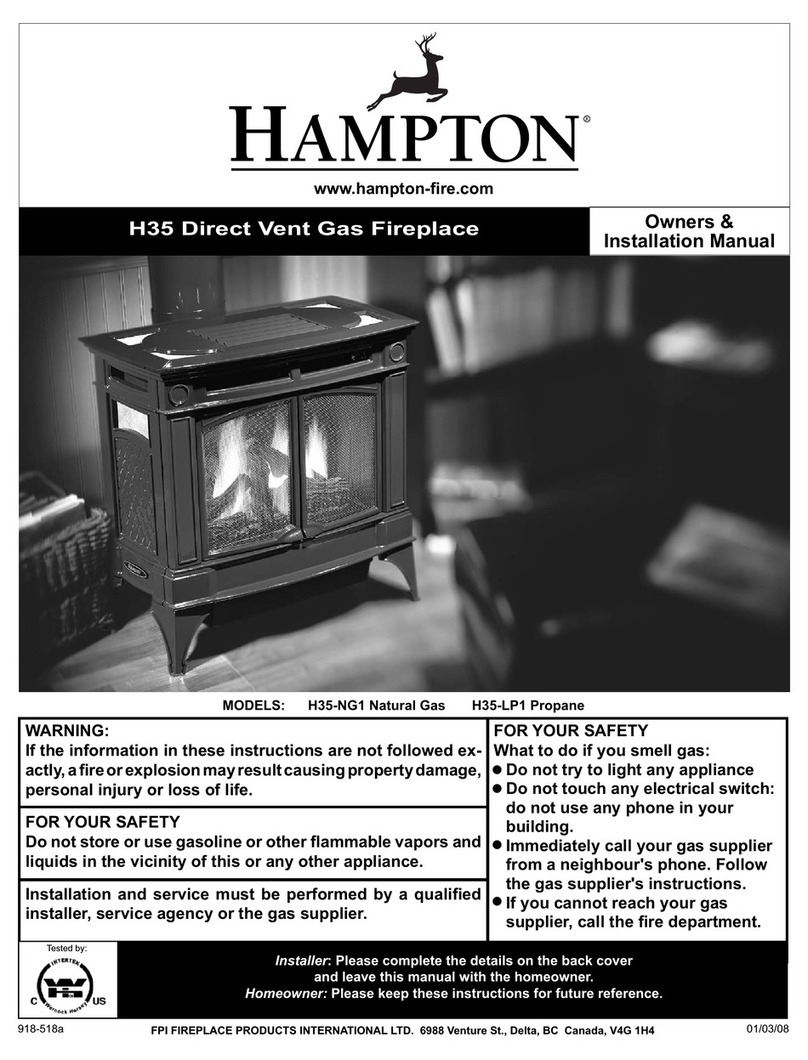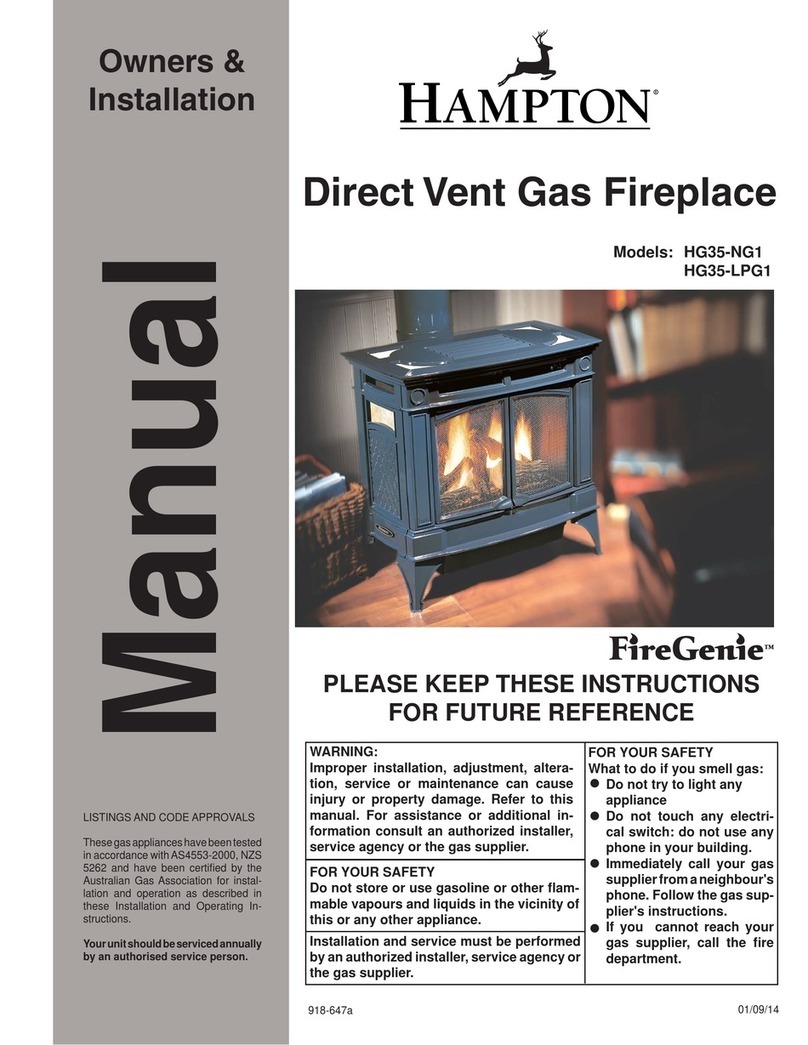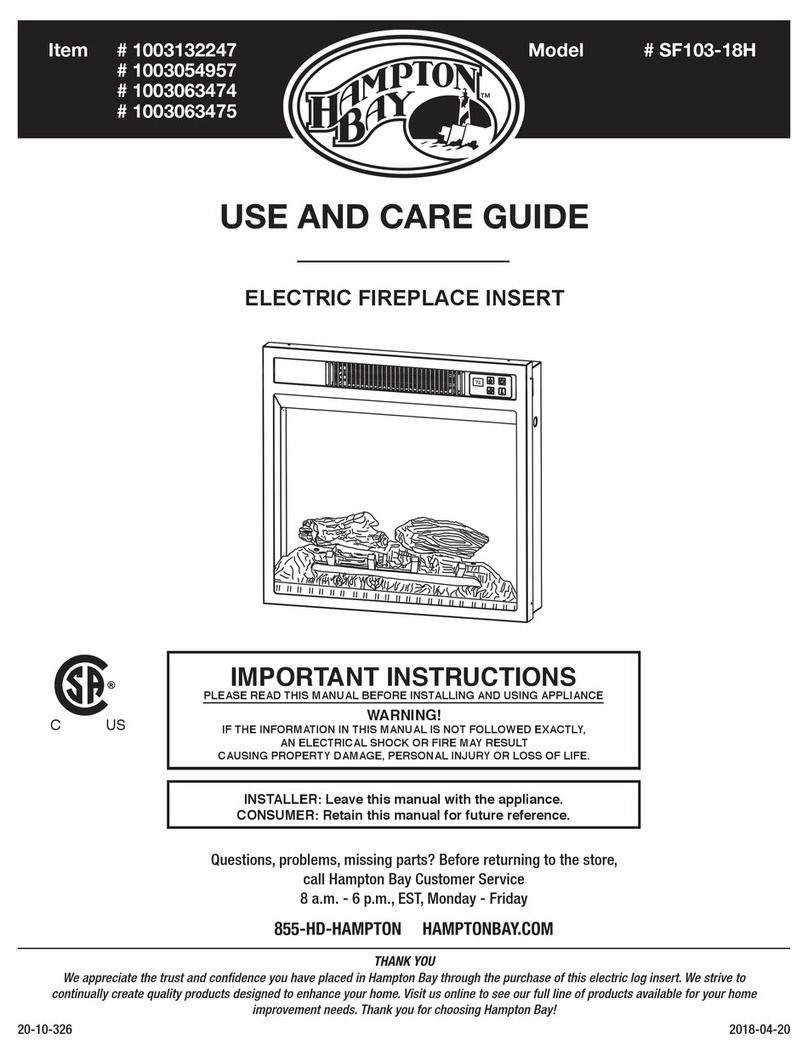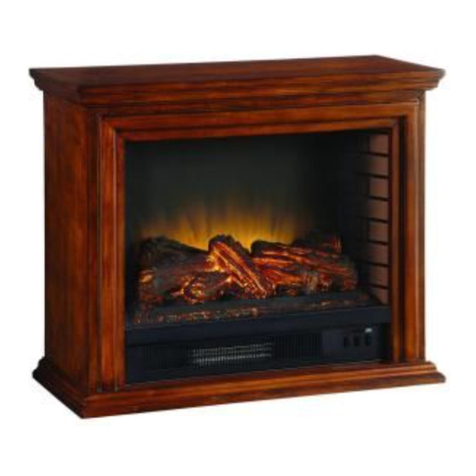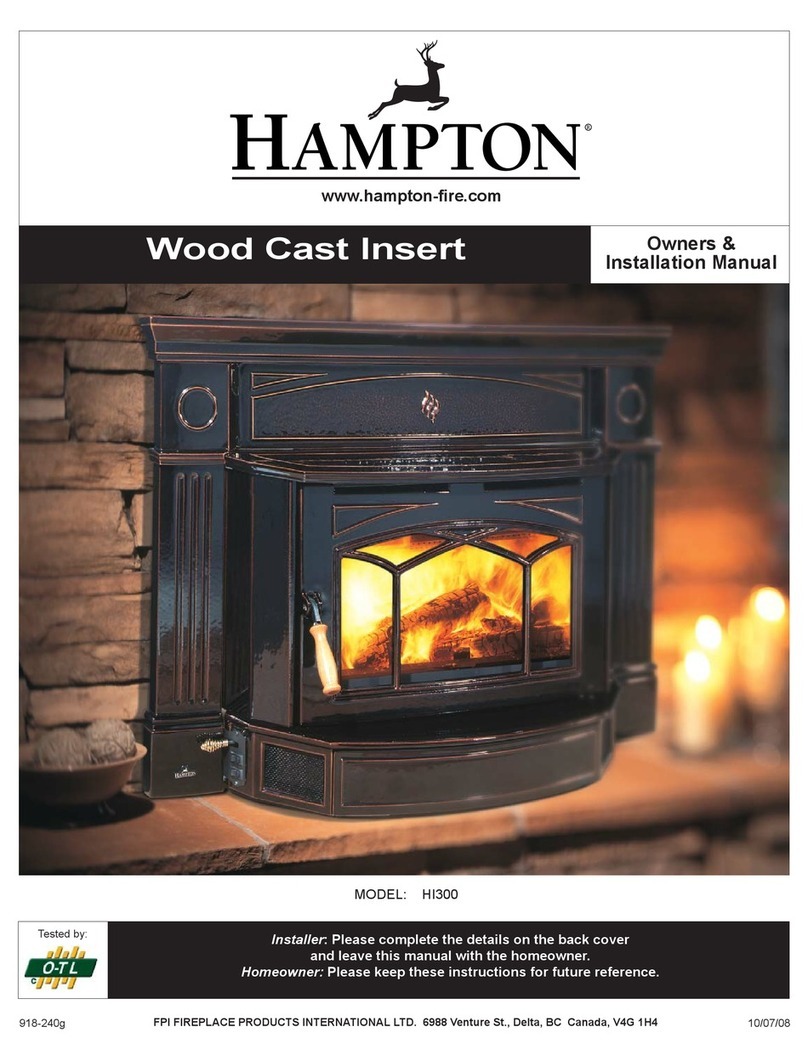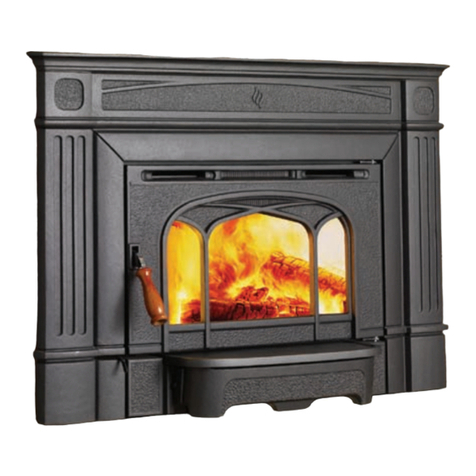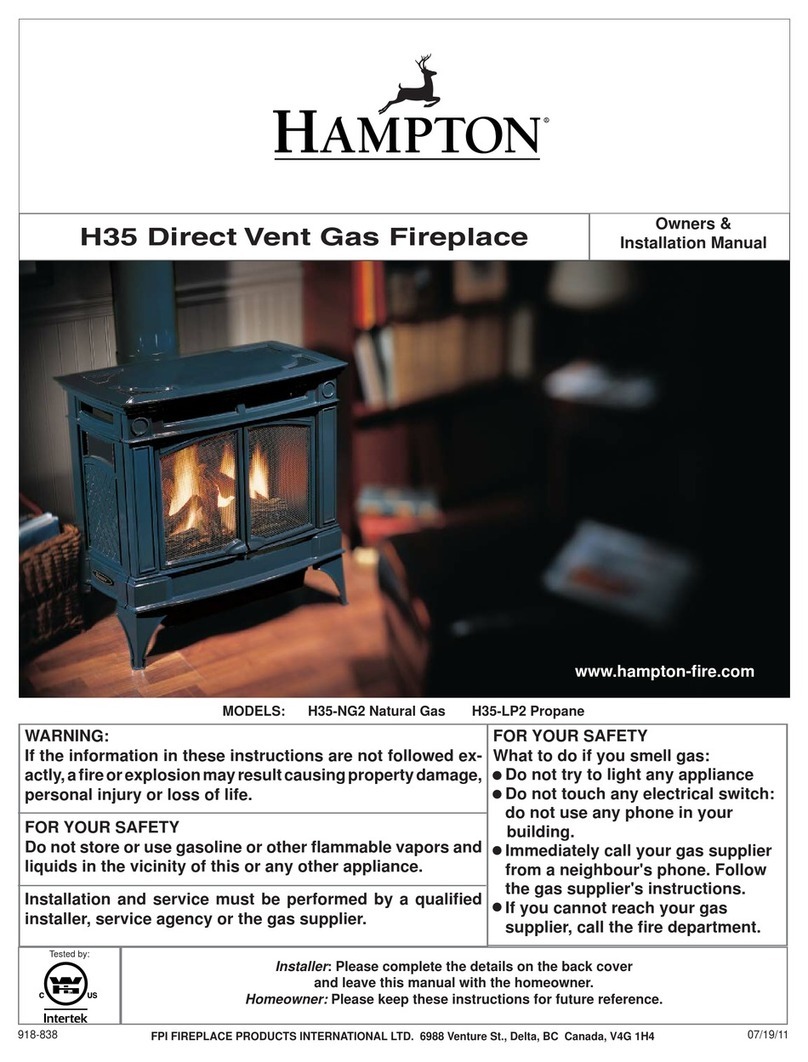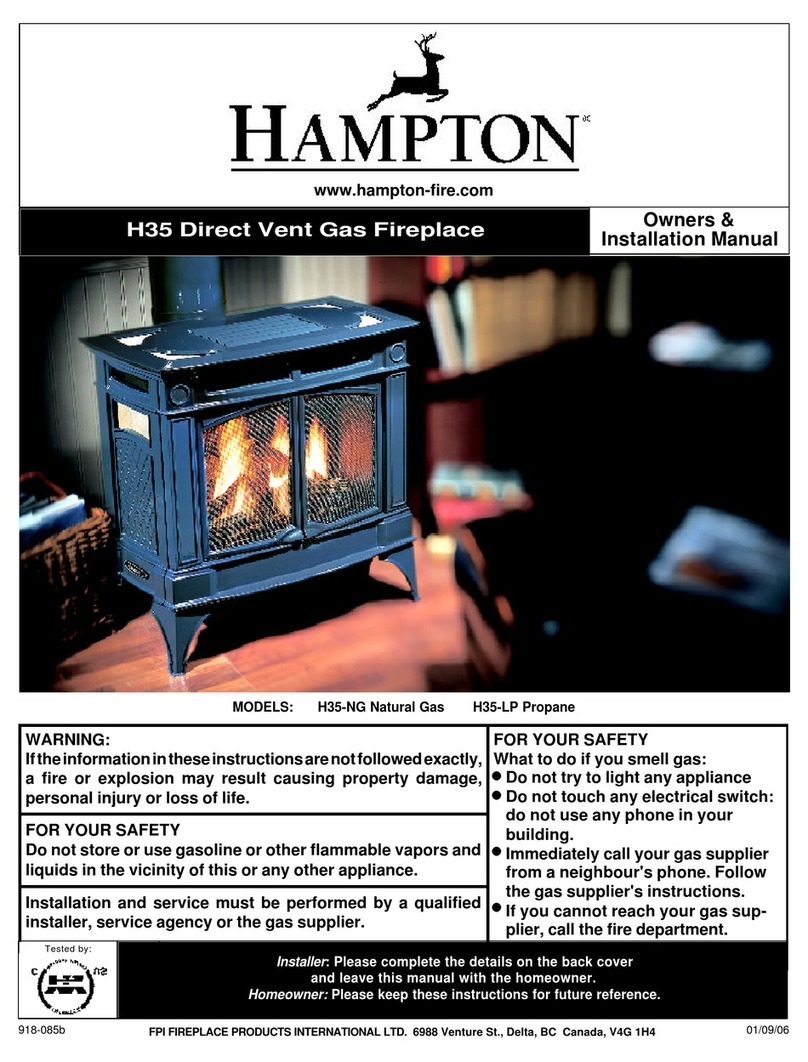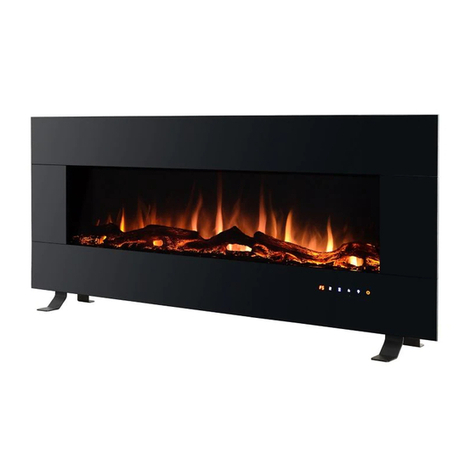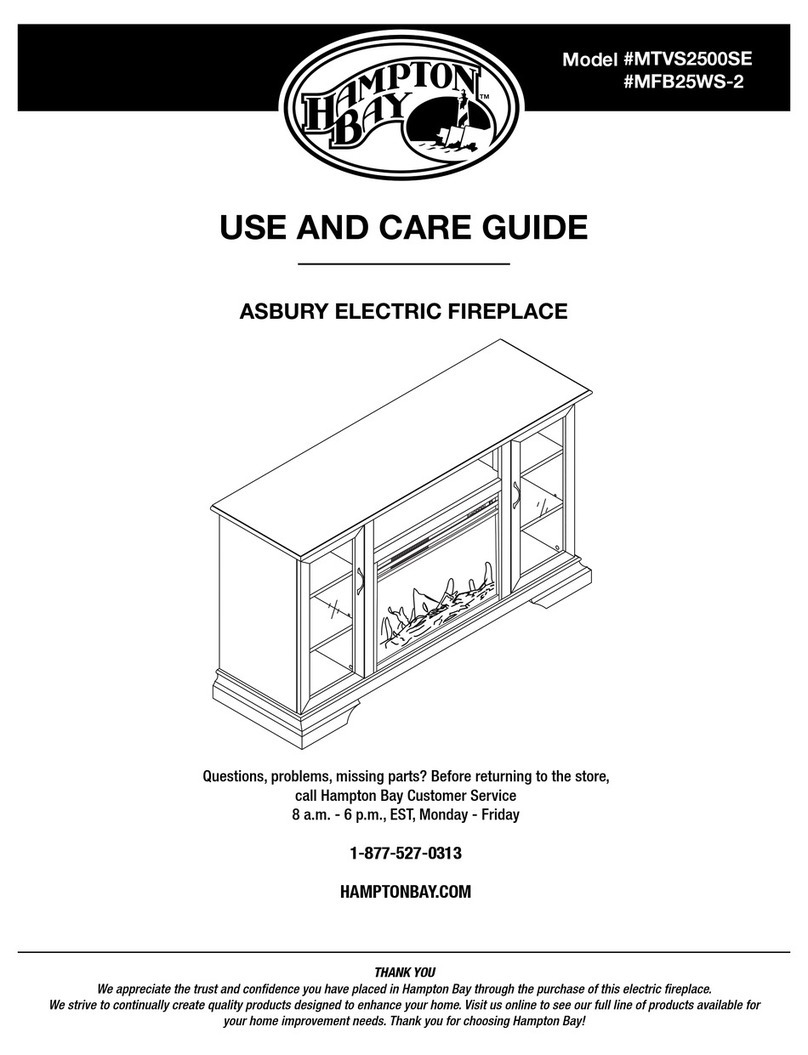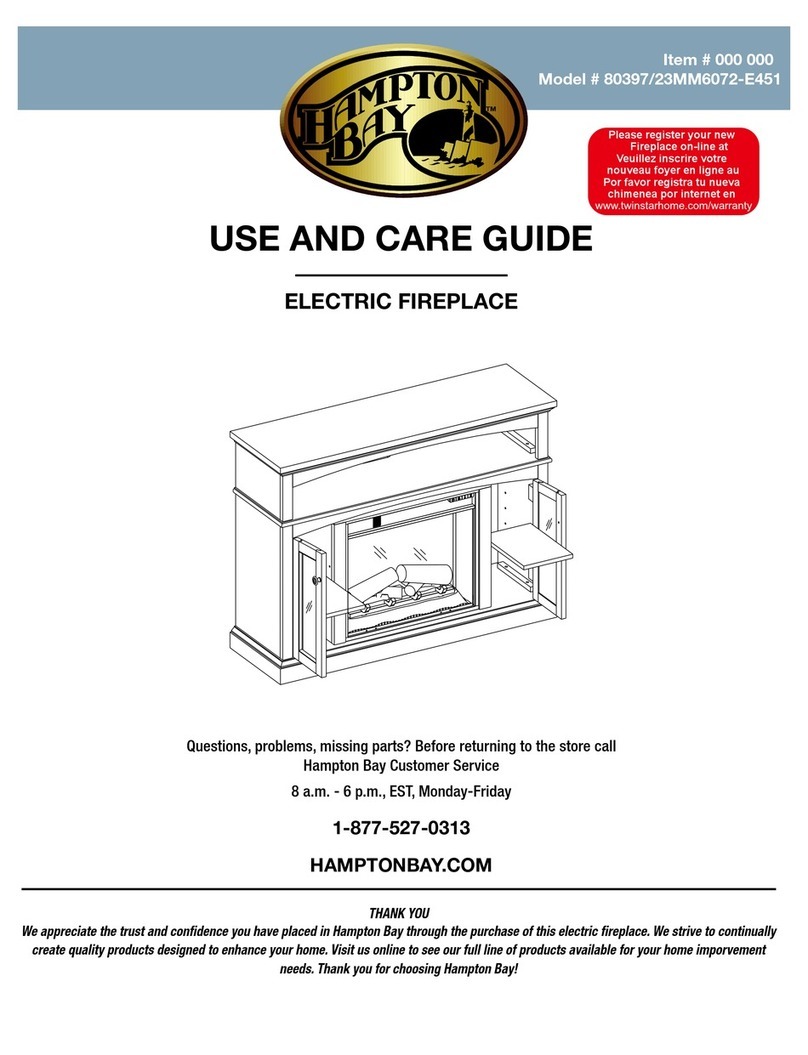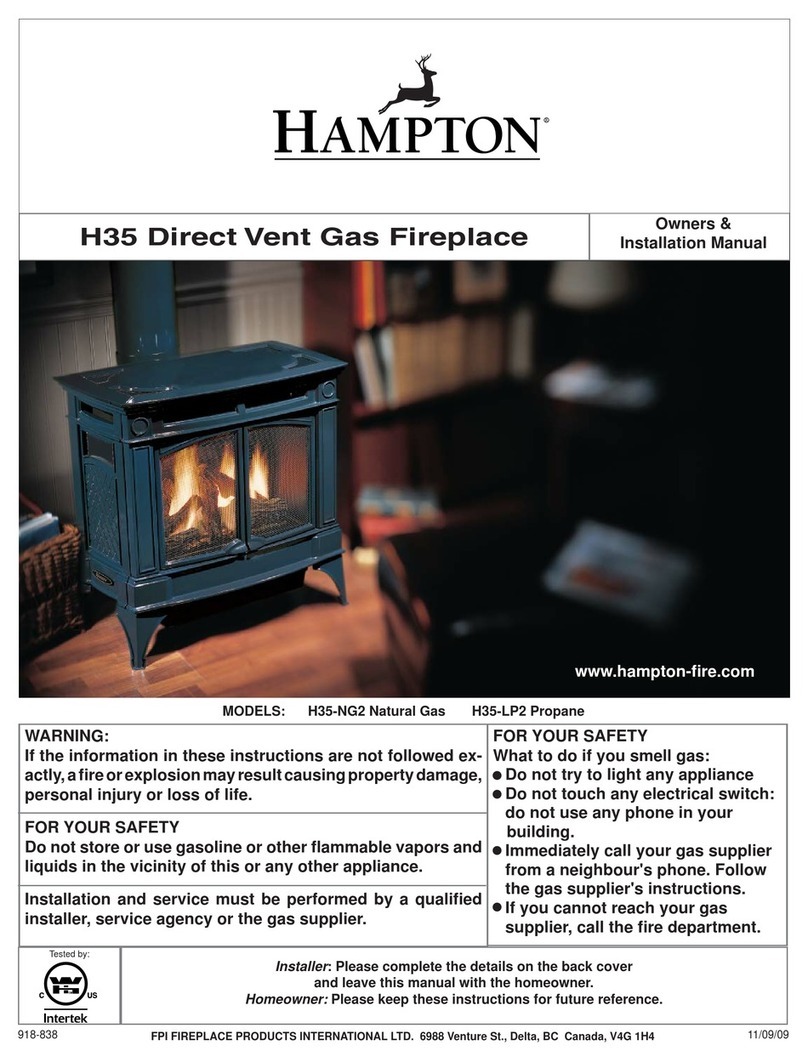
HI1150 Hampton Wood Cast Insert | 17
operating instructions
WARNING: To build a re in ignorance
or to disregard the information
contained in this section can cause
serious permanent damage to the
unit and void your warranty.
Operating Instructions
With your unit now correctly installed and safety
inspected by your local authority, you are now
ready to start a re. Before establishing your rst
re, it is important that you fully understand the
operation of your draft control.
WARNING
Fireplace Stoves equipped with doors
should be operated only with doors fully
closed. If doors are left partly open,
gas and ame may be drawn out of the
replace stove opening, creating risks
from both re and smoke.
How to Light & Maintain
a Wood Stove Fire
Draft Control
Before establishing your rst re, it is important
that you fully understand the operation of draft
control. The draft control rod is on the left side of
the Insert and it controls the intensity of the re
by increasing or decreasing the amount of air al-
lowed into the rebox. To increase the draft, slide
the rod to the left and to decrease the draft, slide
the rod to the right.
As well as a primary and glass wash air system, the
unit has a full secondary draft system that allows
air to the induction ports at the top of the rebox,
just below the ue bae.
Slide Left to
Increase Draft
Slide Right to
Decrease Draft
First Fire
START UP AND OPERATING PROCEDURES:
1. For the rst few days, the wood insert will
give o an odour from the paint. This is to be
expected as the high temperature paint becomes
seasoned. Windows and/or doors should be left
open to provide adequate ventilation while this
temporary condition exists. Burning the wood
insert at a very high temperature the rst few
times may damage the paint. During the rst few
res, keep the combustion rate at a moderate
level and avoid a large re. Only after 5 or 6
such res can you operate the wood insert at
its maximum setting, and only after the metal
has been warmed.
2. Do not place anything on the wood insert top
during the curing process. This may result in
damage to your paint nish.
3. When starting the re, ensure air control is in
the fully open position (far left). Crumble 2-5
pieces of newspaper and add approx. 1lb of
kindling stacked in a manner that allows air
ow on the rebrick hearth (Tee-pee style or
other). DO NOT USE A GRATE TO ELEVATE
THE FIRE.
Light the newspaper and adjust the door if it
is slightly ajar for less smoke roll out. Keep
the door in that position for 2-3 minutes to
establish a good re.
4. When the re is well established add another
0.5 - 1 lb kindling along with few pieces of start
up cord wood (startup cord wood is slightly
larger than kindling but not full pieces of cord
wood). keep the door open for 1.5 - 2 min until
the re started well enough then close the door.
CAUTION: Never leave unit unattended
if door is left open. This procedure is for
re start-up only, as unit may overheat
if door is left open for too long.
5. Once ame has been established, open the
door and add another 6 or 7 pieces (2 lbs) of
start up cord wood more to the back. Hold door
slightly ajar for 30-60 sec to establish ame,
and then close the door.
NOTE: These steps are crucial to ensure proper
charcoaling and coal bed prior to loading High,
Med and Low re loads.
6. Once this has burned down, open the door,
and rake the coals to create a uniform charcoal
bed. Load 5 pieces of 17” long cord wood, East-
West orientation, with the heaviest pieces at
the back of the rebox, and ensure all pieces
are behind the log retainers. Do not block the
pilot with wood. Once loaded, close the door
right away. Burn on high setting (air control
to the far left when facing the unit) for 6-10
minutes. Now you can adjust the air control to
your desired position. After 15 minutes, the fan
can be turned on.
High Fire: Air control to far left.
Low Fire: Air control to far right.
WARNING: Never build a roaring re in
a cold wood insert. Always warm your
wood stove up slowly!
7. When re-fueling, always open the primary air
damper, load fuel, then wait for at least 10
minutes before adjusting the air to the desired
position. This will also minimize any smoking
(spilling) back into the room.
8. During the rst few days it may be more dicult
to start the re. As you dry out your rebrick
and your masonry ue, your draft will increase.
9. For those units installed at higher elevations
onto sub-standard masonry replaces, drafting
problems may occur. Consult an experienced
dealer or mason on methods of increasing your
draft.
10. Some cracking and popping noises may be
experienced during the heating up process.
These noises will be minimal when your unit
reaches temperature.
11. All fuel burning appliances consume oxygen
during operation. It is important that you supply
a source of fresh air to your unit while burning.
A slightly opened window is sucient for the
purpose. If you also have another replace in
your home, a downdraft may be created by your
Regency wood insert causing a draft down your
chimney. If this occurs, slightly open a window
near your unit.
WARNING: If the body of your unit,
or any part of the chimney connector
starts to glow, you are over ring.
Stop loading fuel immediately and
close the draft control until the glow
has completely subsided.
12. Green or wet wood is not recommended for
your unit. If you must add wet or green fuel,
open the draft control fully until all moisture
has been dispersed by the intense re. Once all
moisture has been removed, the draft control
may be adjusted to maintain the re.
13. The controls of your unit or the air supply
passages should not be altered to increase
ring for any reason.
14. If you burn the unit too slowly or at too low
a setting your unit will not be operating as
eciently as it can. An easy rule of thumb says
that if your glass is clean, then your ue is clean
and your exhaust is clean. Burn the insert hot
enough to keep the glass clean, and you won't
need to clean your ue as often.
When your installation is completed and inspected
you are ready for your rst re.
THIS UNIT IS DESIGNED TO BURN SEASONED
CORDWOOD ONLY. COAL, BRIQUETTES AND
ALL OTHERS LISTED ON PAGE 2 ARE NOT
APPROVED. SEASONED CORDWOOD SHOULD
BE LESS THAN 20% MOISTURE CONTENT.




















